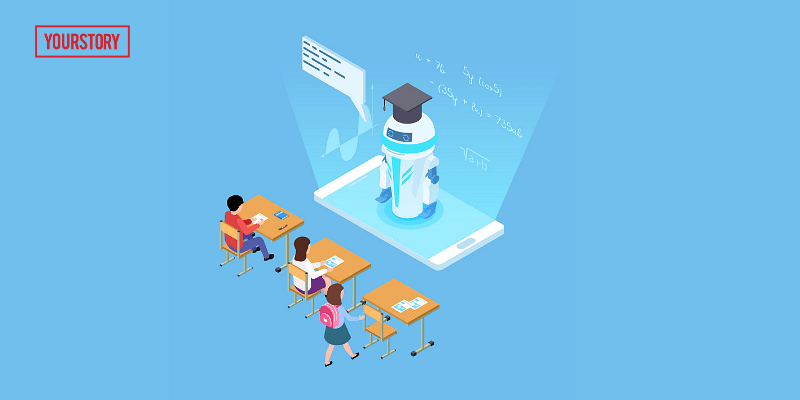How AI will help to scale testprep education
The objective of AI based personalised learning is to analyse information of student style, attributes, strengths, and weakness and build a learning path, which would help a student to achieve mastery on the subject.
Its 10 am on a Monday morning and results were about be announced for the all-India tests that we conducted on Sunday. Satish, Head of Academics, is busy with his fleet of faculty preparing the results that need to be announced.
Not only have the results to be announced, but the differentiator (compared to other academies) is that the faculty also need to define the action plan for improvement based upon the chapter-wise scores that the student obtains.
Take the case of Rahul, a consistent high percentile student. His subject teachers look through his mistakes done in the test, by analysing time taken on various questions, type of questions where he faltered, a trend of his previous assessments done, and then suggest a study plan of concept videos and reading material, with an aim to score even better.
They also need to prepare the follow-up assessments for upcoming weeks on the topics where Rahul had made mistakes with similar new questions so that he can have a mastery on those topics.
This would have been fantastic; but doing it for all the students is practically impossible to do considering the time, effort, and also the skill level of the faculty. This is where data-analytics using Artificial Intelligence (AI) tools can be leveraged on a continuous basis, to personalise the study-plan for each student.
AI-based personalised learning
The objective of AI-based personalised learning is to analyse information of student style, attributes, strengths, and weakness, and build a learning path that would help a student to achieve mastery on the subject.
AI models are built on a few major pillars.
- The first pillar is the student, who is profiled from various perspectives — demographic, academic, emotional, motivation, metacognition, self-regulation, etc.
- The second pillar is the content — the format, duration, educational type, the level of difficulty, inter-relationships with other content items and other parameters.
- The third pillar is around the curriculum — essentially how students are expected to navigate the knowledge and experience in the scope of learning.
- The fourth pillar is around assessments — data that tells the model about the specific performance of the students as they progress through the course.
- The fifth pillar is around the teacher — path through content, remediations planned, content delivery, engagement, and so on.
One or more of these pillars are used to classify students, recommend learning paths and provide feedback. Learning paths built are constantly evolved based on various pillars to improve the learning outcome.
The two-sigma problem, in which it is observed that students who get such one-on-one attention are likely perform two standard deviations better than the students learning in a classroom setting. This improvement possibility has been the driver behind research in personalized adaptive learning models using AI.
How does AI help to scale education and improve learning outcome?
There are large-scale benefits using these technologies that help in building better learning environments, tools, and digital content.
Below are the some of the areas where AI could be leveraged to become the differentiators.
Learning gap analysis
An automated system driven analysis can find the precise areas that need improvement .
Virtual tutor
An AI-based virtual tutor building personalized learning paths for each learner, previously restricted to few toppers, would benefit all learners to improve their mastery, and hence improve learning outcome at large scale as well as democratise education.
Business scalability
As assessment is automated, shortage of good faculty will no more be a constrain. Thus business can scale to beyond cities to all-tiers, while continuing to provide personal attention and improvement plans , in a cost effective manner.
Faculty productivity
System can automate most of the grading of student work, repetitive tasks, and performance analysis of the students etc., thus allowing faculty to focus on areas related to teaching, personal tutoring, and learning pedagogies that are not system driven.
Conclusion
In summary, AI promises to be an integral part of the teaching and learning process. It is quite certain that the path forward will be difficult, not just for the technologists making the technical breakthroughs, but also for educators, who will need to imagine new digital pedagogies based on which the innovation in AI will be extended to the field of education.
The partnerships between research, academics, government, and industry, will result in the next paradigm shifts in education resulting in scale and making the education personalised and improve learning outcome across all.
Edited by Saheli Sen Gupta
(Disclaimer: The views and opinions expressed in this article are those of the author and do not necessarily reflect the views of YourStory.)









![[Funding alert] BAce Capital leads $7.5M Series B round in Lido Learning](https://images.yourstory.com/cs/2/730b50702d6c11e9aa979329348d4c3e/Image31sk-1585233224215.jpg)


